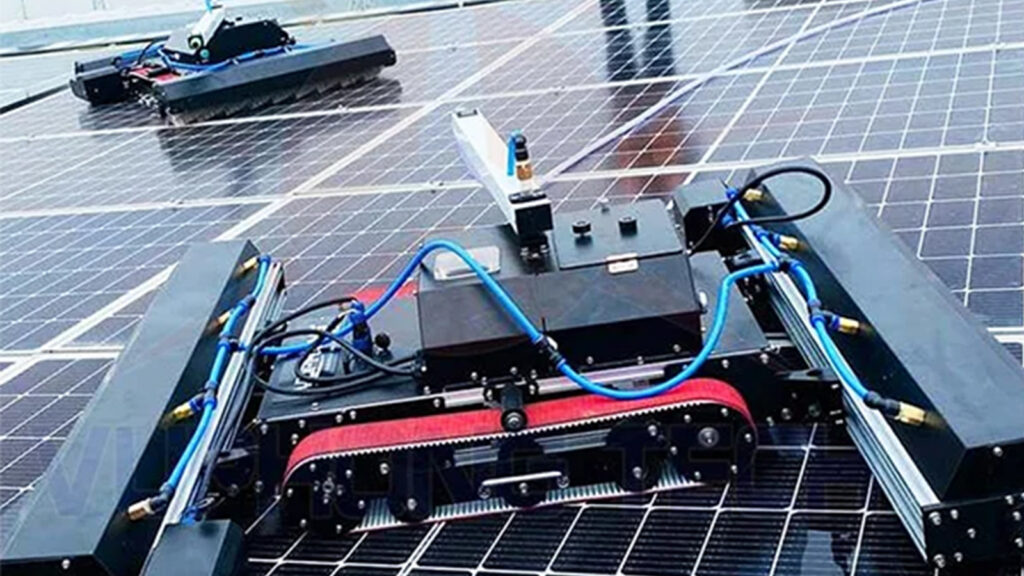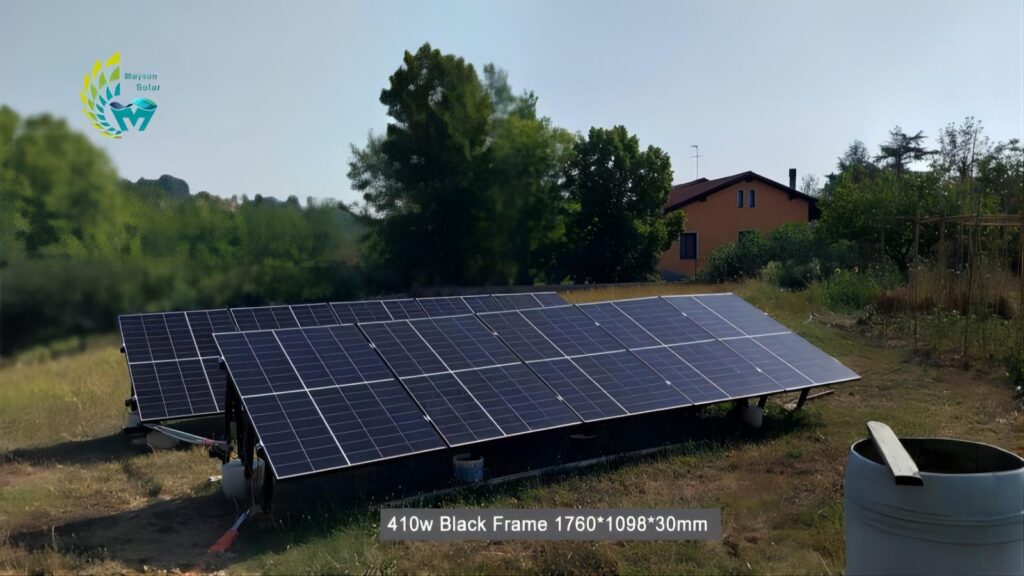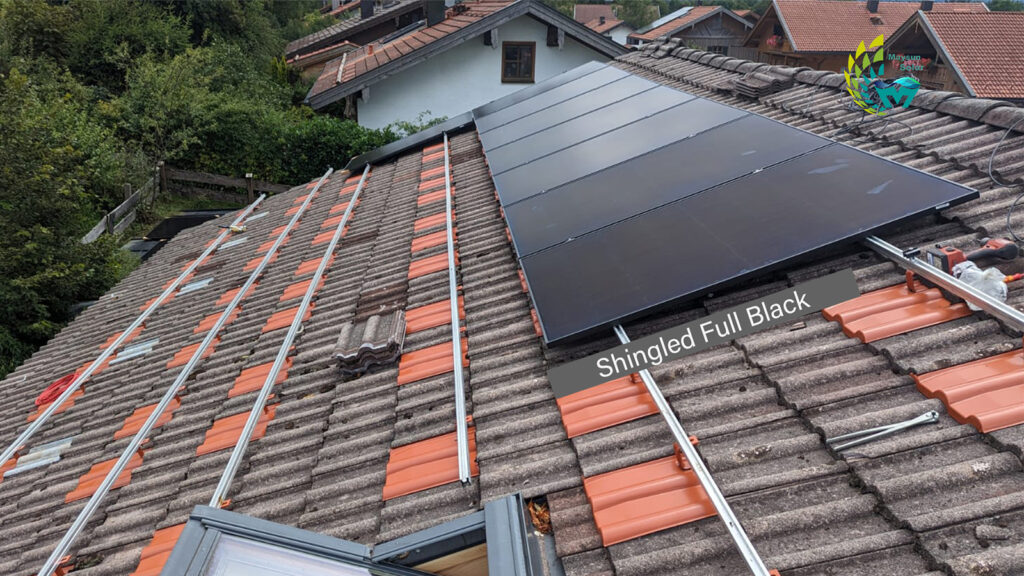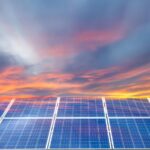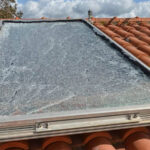There is an increasing interest in using renewable energy sources like photovoltaic energy systems. This is due to the high cost of conventional energy sources and the growing environmental awareness. To ensure solar panels work efficiently, it’s important to maintain clean conditions to prevent dirt from blocking sunlight. Regular cleaning of solar panels is necessary in this context. This has led to the emergence of the photovoltaic cleaning industry and an increasing use of robots for cleaning photovoltaic panels.
What is a solar panel cleaning robot?
A robot that is placed on solar panels and instead of using water, uses electric power and sensor technology to clean fully autonomously and sustainably.
Types of solar panel cleaning robots
Semi-Automated Cleaning
It is a method of cleaning where a brush with controls is connected to a tractor or a compatible vehicle. The vehicle is operated by a person to drive the cleaning mechanism. Every machine has a safety system to control the pressure of the brushes on the PV panels. This is done by the driver/operator to prevent any harm to the panel surface. A vehicle needs a wide turning radius at the end of rows to easily turn around without wasting cleaning time. Compared to other schemes, this usually requires more space.
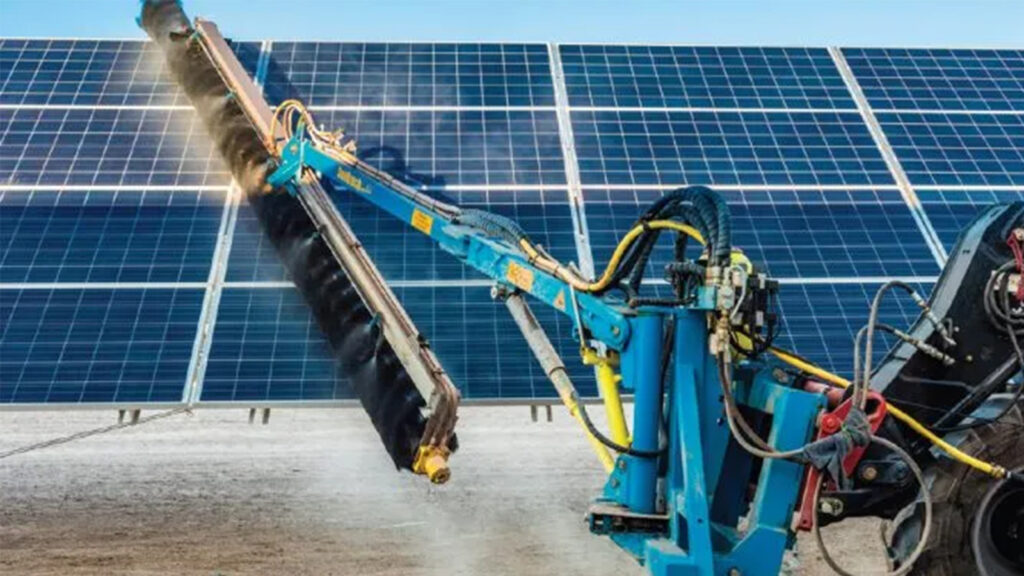
Fully Automated Cleaning
The Automatic Robotic Cleaning System makes this type efficient and reliable. Robots or Bots, permanently installed on each row of the power plant, clean. These robots travel along the module row’s panel edges. Docking Stations on one side of each row park them. If they’re longer than the robot’s journey length in one direction, rows may have such stations. Bridges cover holes to help robots move between arrays and trackers. Return Stations at calculated locations cause robots to return to their docking stations.
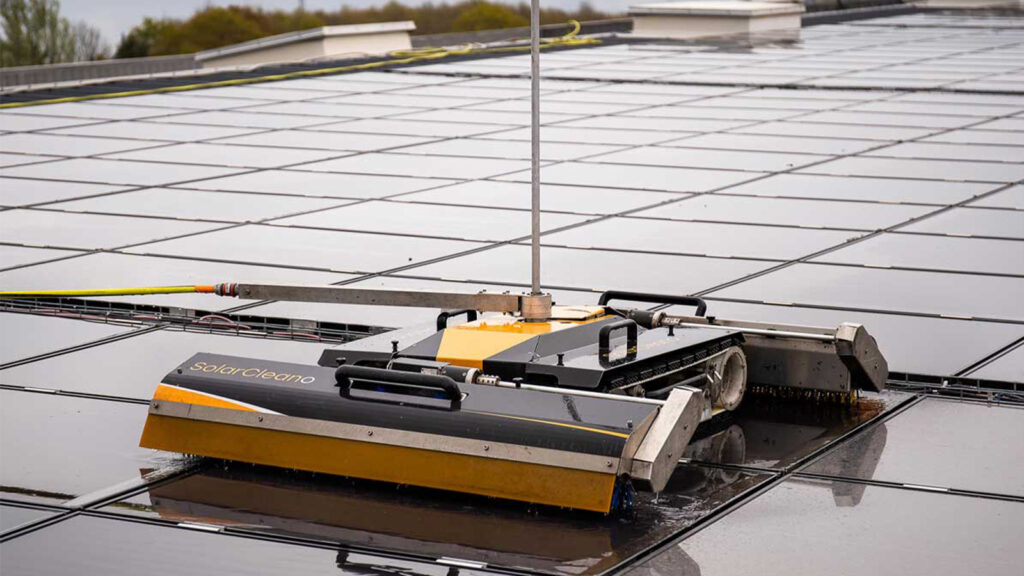
Should I clean my solar panel?
Yes, there are many serious problems associated with not cleaning your panels regularly:
- Energy loss:CleanTechnica reported the results of an analysis collected by the National Renewable Energy Laboratory (NREL) that the total loss of panels is about 30% if they are not cleaned properly.
- Damage to the solar panels themselves:As a result of long periods of uncleanliness, solar panels accumulate large amounts of dust, bird droppings, leaves and even rainwater. Due to uneven heating, solar panels will produce internal damage to the power consumption of the hot plate effect, so that the service life of solar panels greatly shortened.
- Unsightly:solar panel, as a new way of utilizing energy, are covered with dust and dirt on the roof, which not only affects the overall aesthetics of the building, but also gives a feeling of untidiness and lack of attention to the environment. However, these dirty solar panelmake all this meaningless.
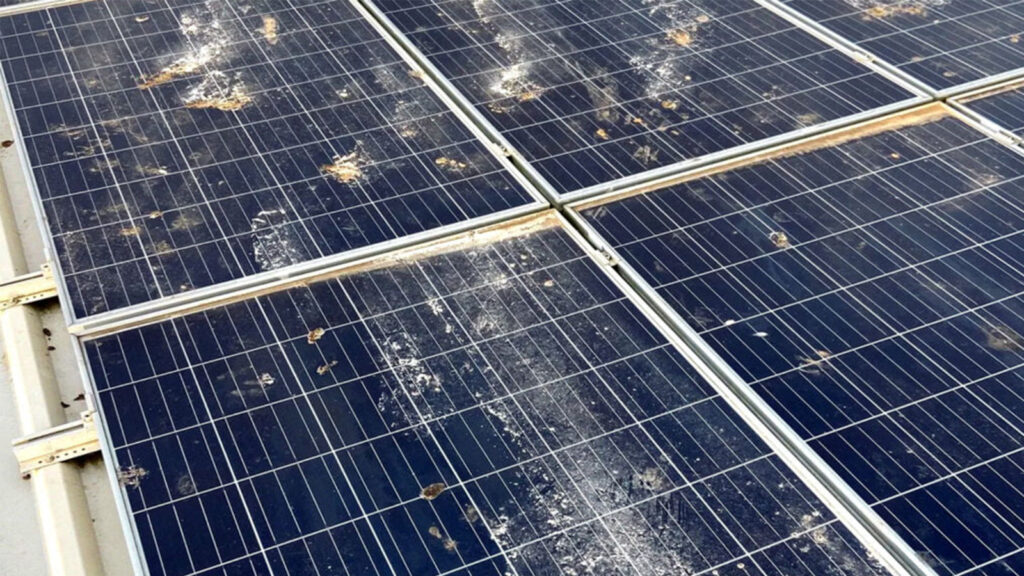
What are the advantages of solar panel cleaning robots?
- Time:robotic cleaning can be carried out at night, during non-productive hours. On the one hand, it does not take time away from the solar paneland avoids shading the panels, which can lead to electrical imbalances and panel damage;
- Safety: no human assistance is required, so there is no risk to the operator;
- Efficient:treated with a well-designed penetration system, no streaks or scale deposits appear on the solar panelafter cleaning.
- Cost-effective: the panels can be cleaned daily at low cost, minimizing economic consumption;
- Sustainable: no water or diesel is consumed, thus eliminating the associated CO2 emissions;
What to look for in a solar panel cleaning robot?
- Cleaning method: When self-propelled robots are used for cleaning, it is usually more regular, thorough, safer and cheaper than manual methods.However, these types of PV cleaning robots are usually only suitable for roofs with small slopes (up to 25 degrees). In the case of roofs with larger slopes, manual semi-automatic cleaning methods are more advantageous.
- Working width: solar panel cleaning robotson the roof, need a certain working width, As a rule, maintenance aisles on the roof between the module rows can be traversed without any problems as long as a distance of up to 60 cm is maintained. This makes it easier for the robot to clean smaller roof units.
If you don’t want to clean your panels only to find out that there are installation problems with the angle, position, etc., You need to find a professional installer in advance to help you install the solar panels properly, plan enough space for subsequent maintenance and cleaning, and design an efficient cleaning program.
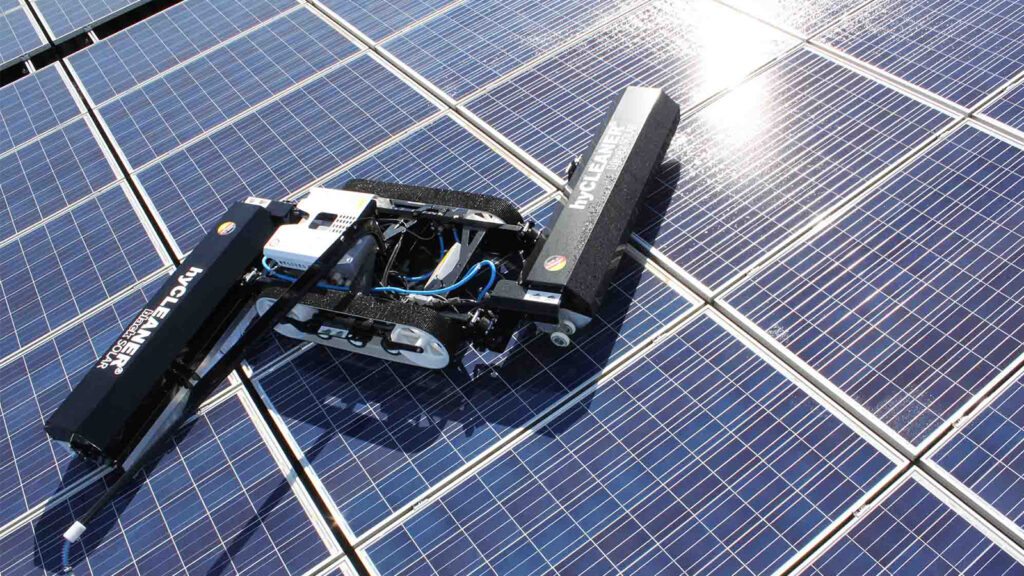
Maysun has been serving various countries since 2008, and its products have already entered thousands of households, and it maintains a good relationship with local Installer . You can find us, and we will recommend a good Installer to help you install the panels, which will provide a good foundation for you to clean the panels in the future.We have cooperated with customers from many countries, and received good feedback.
With Maysun Solar, we have a wide variety of shingled, half-cut, black frame, full black, silver frame solar panels to choose from, which have excellent performance and stylish design to blend in perfectly with any building. Maysun Solar has successfully established offices, warehouses, and long term relationships with excellent installers in many countries! We offer the most convenient solar panels to install as well as future cleaning and maintenance. Please feel free to contact us for an up-to-date quote on modules or any photovoltaic-related inquiries.
Reference:
A robot for dry cleaning photovoltaic systems (2023).
A robot for dry cleaning photovoltaic systems (2023).
PV-Anlagen reinigen: Mit dem Putzroboter schnell und günstig (2023).

Empowering Factories with Solar Energy A Strategic Tool for Controlling Production Electricity Costs
Commercial and industrial solar is becoming a key solution for factories to reduce electricity costs and hedge against price fluctuations. This article systematically analyzes its deployment models, cost advantages, and sustainable value pathways.

How Businesses Can Offset Carbon Taxes with Solar Power
This article analyzes the latest carbon tax policies and photovoltaic deduction strategies, helping European businesses legally reduce taxes, increase profits through solar investment, and achieve a win-win situation for both economy and environment.

Forecast and Response: Seizing the Next Decade’s Growth Dividend in Europe’s Commercial and Industrial Photovoltaics Market
Maysun Solar analyzes the growth trends of commercial and industrial photovoltaics in Europe over the next ten years, from policies and ESG to technological innovation, helping companies seize the initiative in the energy transition.

How to Calculate Solar System ROI and Optimize Long-Term Returns?
Solar power is becoming a key solution for businesses to reduce costs and improve efficiency. Accurately calculating ROI and optimizing long-term returns are essential to maximizing investment value.

Will Agrivoltaics Affect Crop Growth?
Agrivoltaics combines solar energy and agriculture to reduce up to 700 tons of CO₂ per MW, improve water use, and boost crop growth for sustainable farming.

6.5 Billion Loss Hits Photovoltaics: Reshaping or Elimination?
In 2025, the photovoltaic market may see a turnaround as some companies take early action. A €6.5 billion loss is driving businesses to explore new growth areas like energy storage and hydrogen. Which giants will break through? Industry transformation is accelerating!

